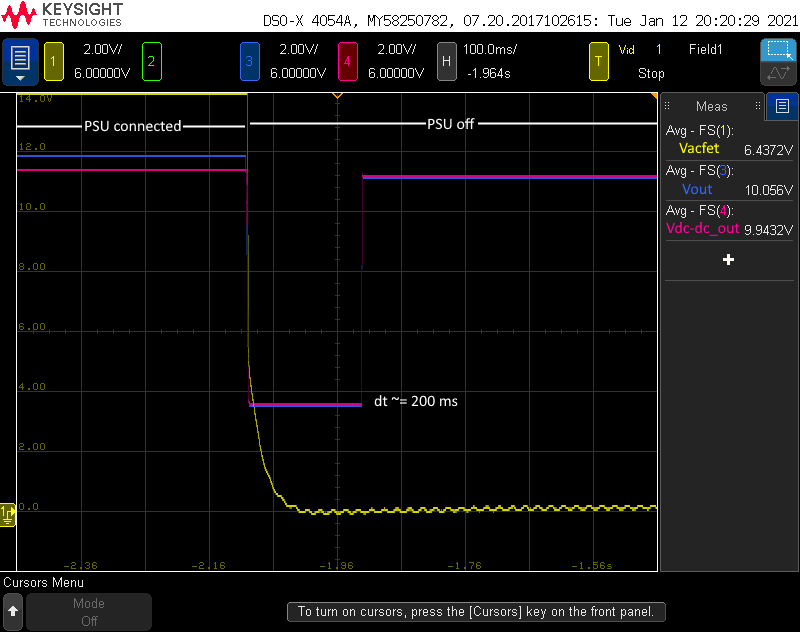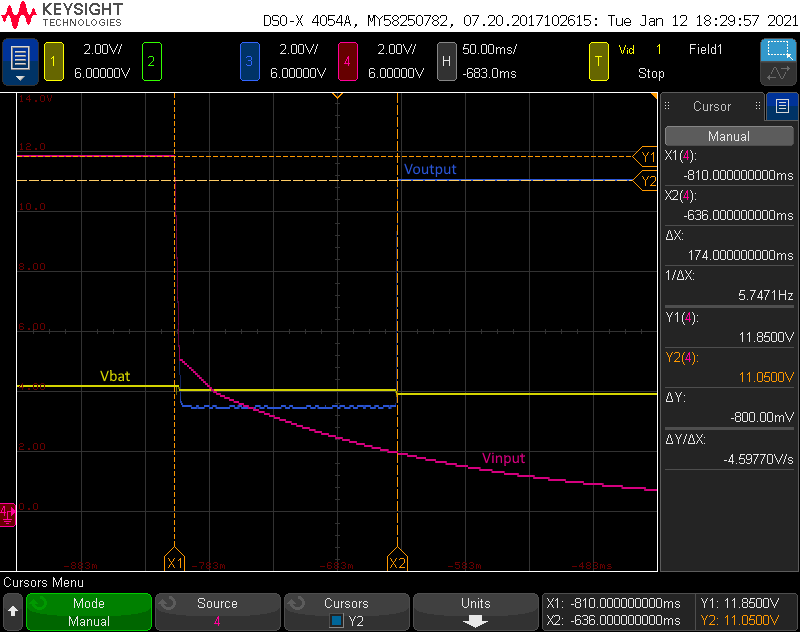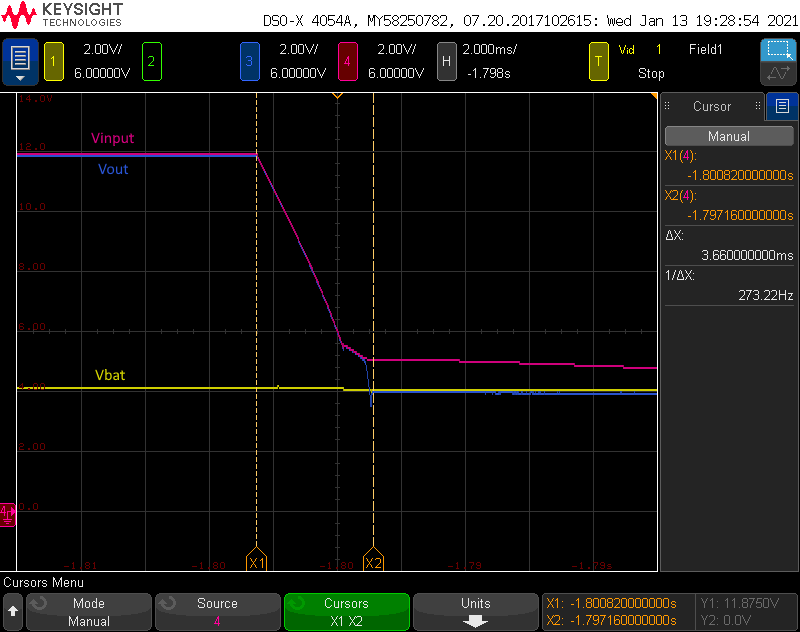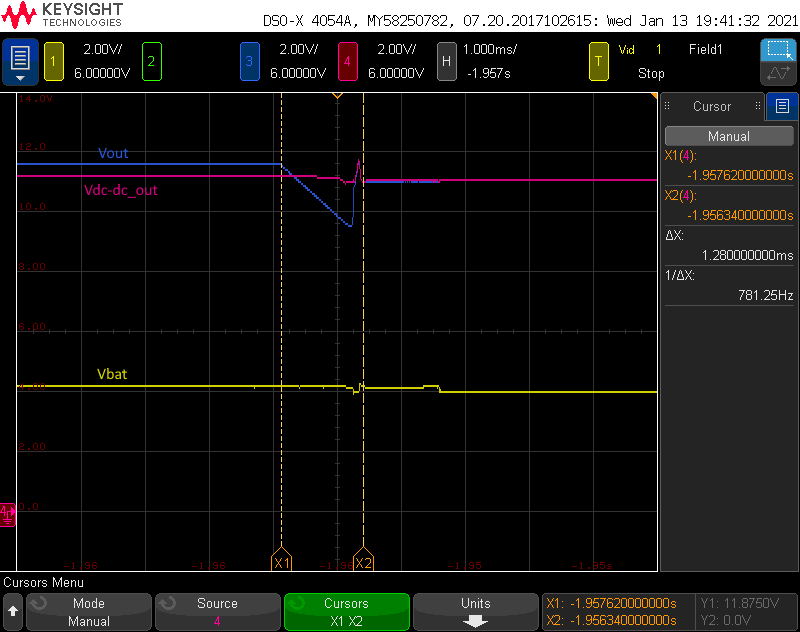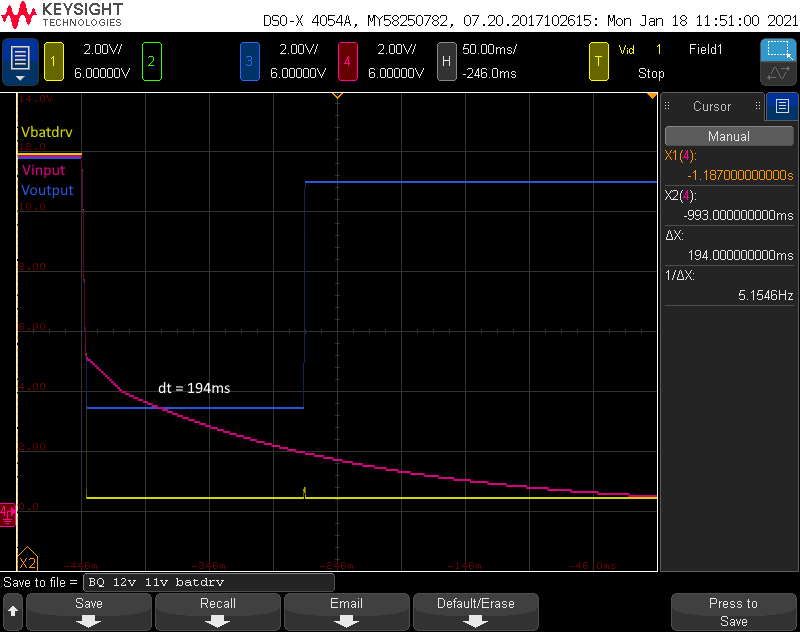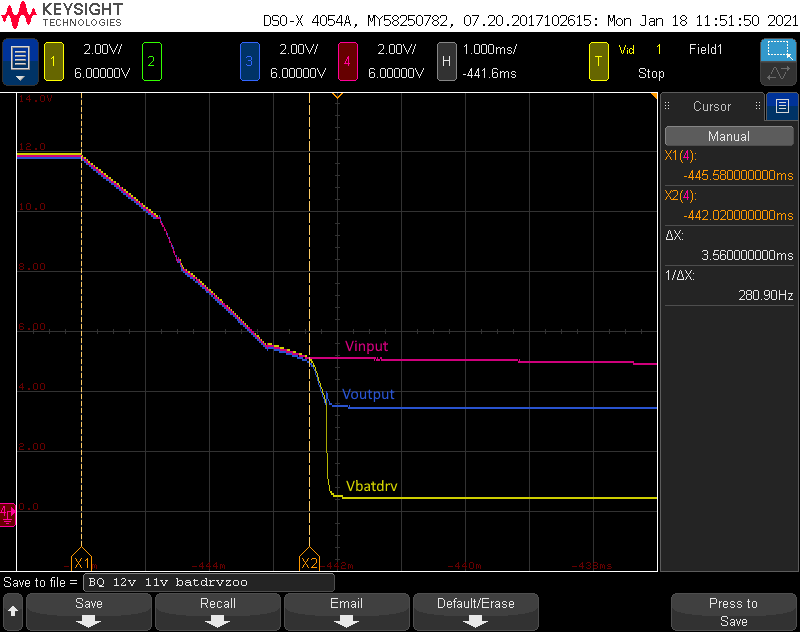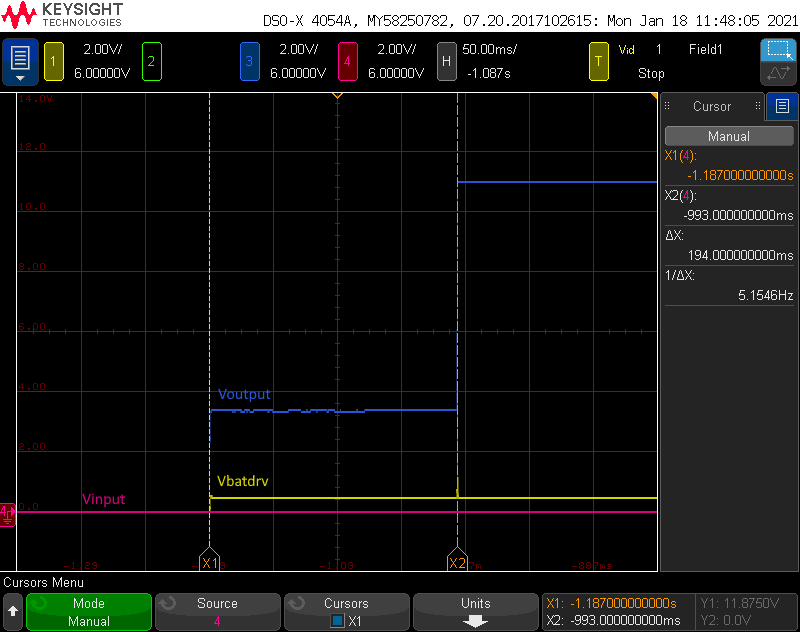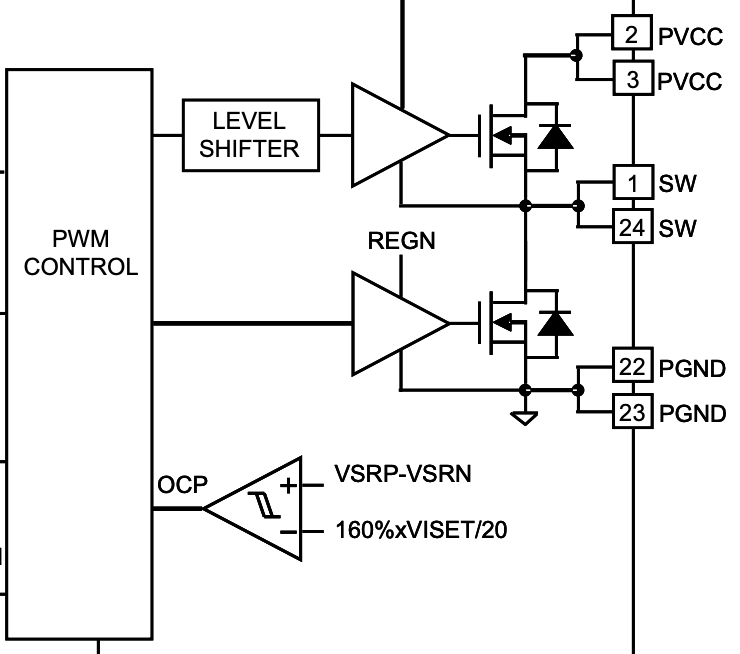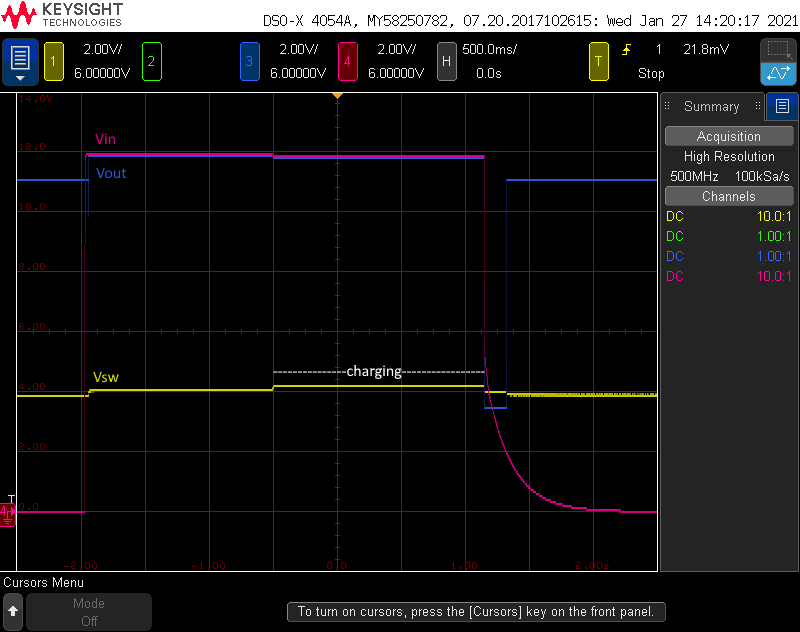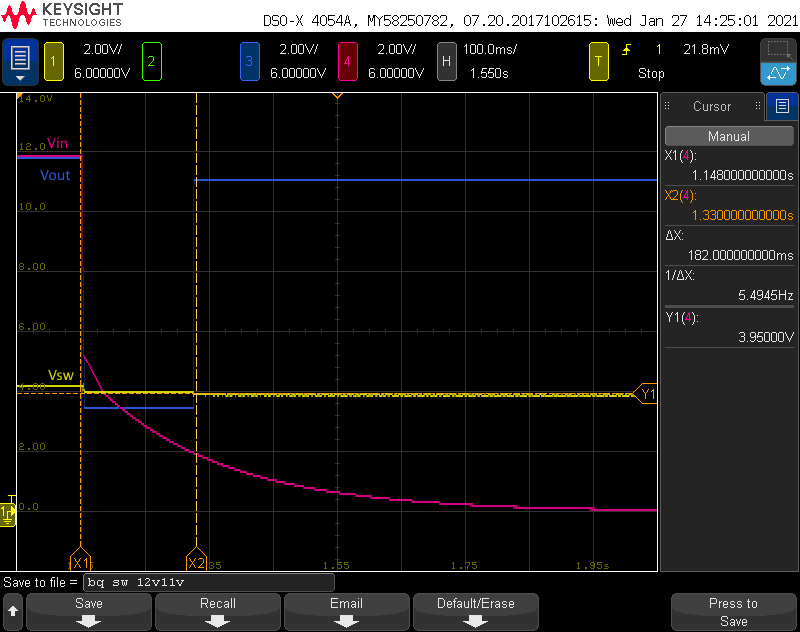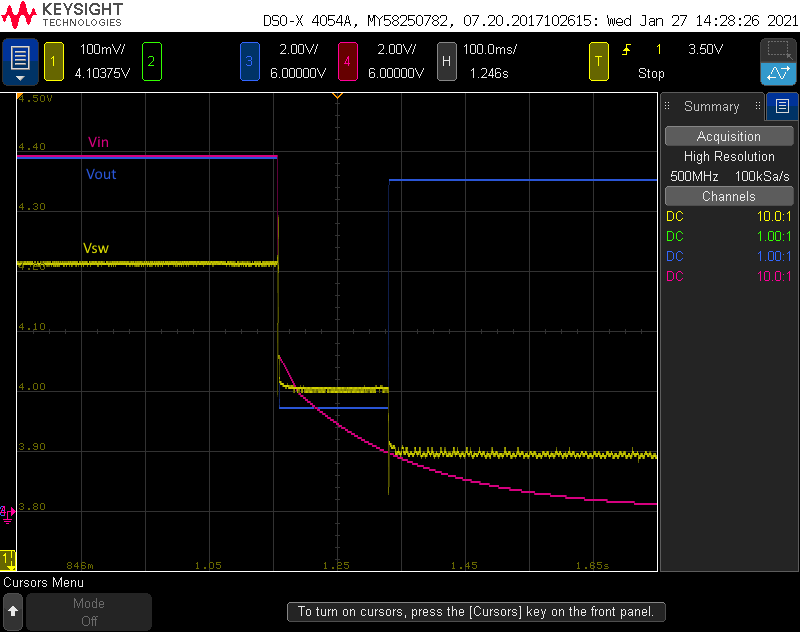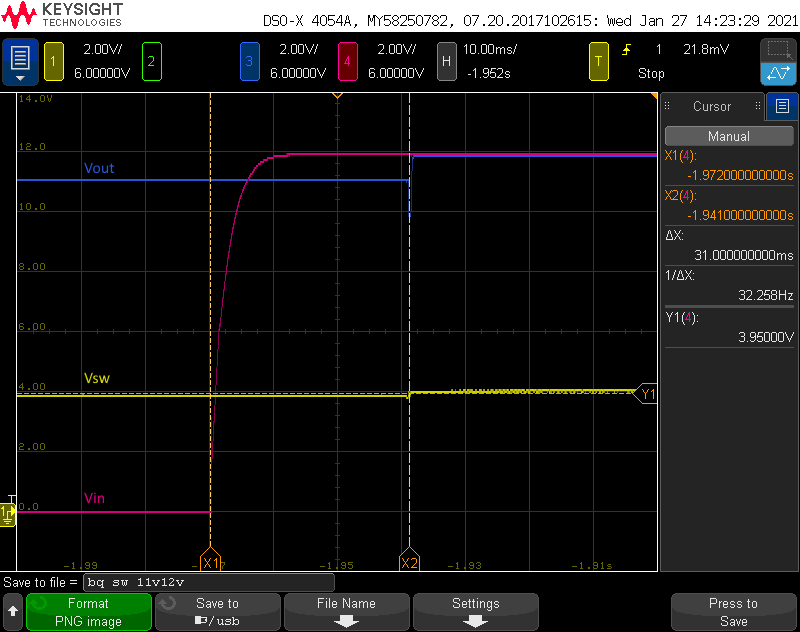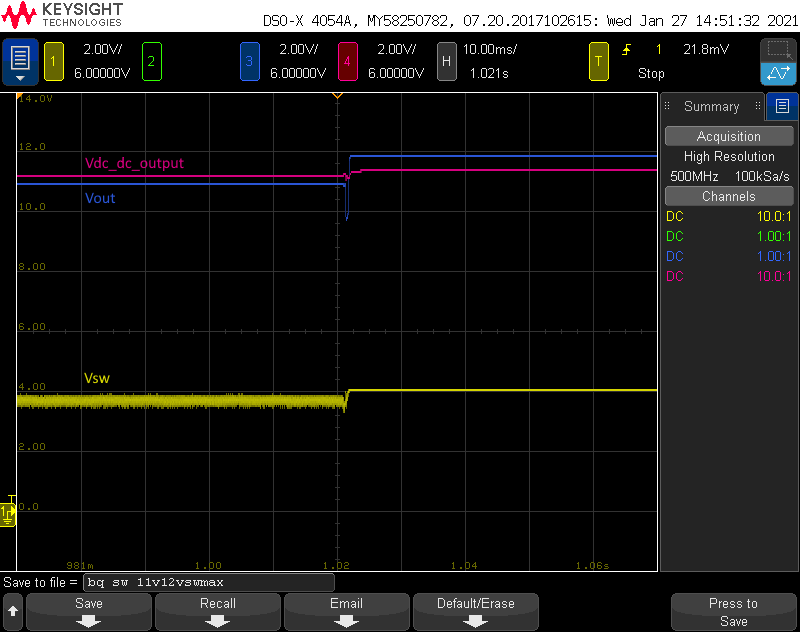Other Parts Discussed in Thread: CSD17313Q2,
For my project, I want to use a single cell li-pol 3.7V battery to power a device that needs 12V, instead of having a 3 cell battery. I tried to do this:
From my earlier post, the issue was I believe in the transistors. At the time I didn't have the CSD17313Q2, so I used a generic SOT23 nmos as the additional transistor. I think the timings affected the IC since that transistor might've been still open while BATDRV pmos is open too.
As of right now, the circuit works as expected after switching to CSD17313Q2 and remaking the pcb, until I try to switch to the battery operation from PSU. When I switch, there is a 150-200ms delay until the DC-DC starts boosting. The DC-DC IC is MAX17112. I am using a 150mA constant load. Here are some waveforms from the o-scope:
Here is just the DC-DC by itself when operating without load and switching to with load:
As you can see, there is no delay in applying a load to the DC-DC. I'm not sure why these two ICs behave like this.




